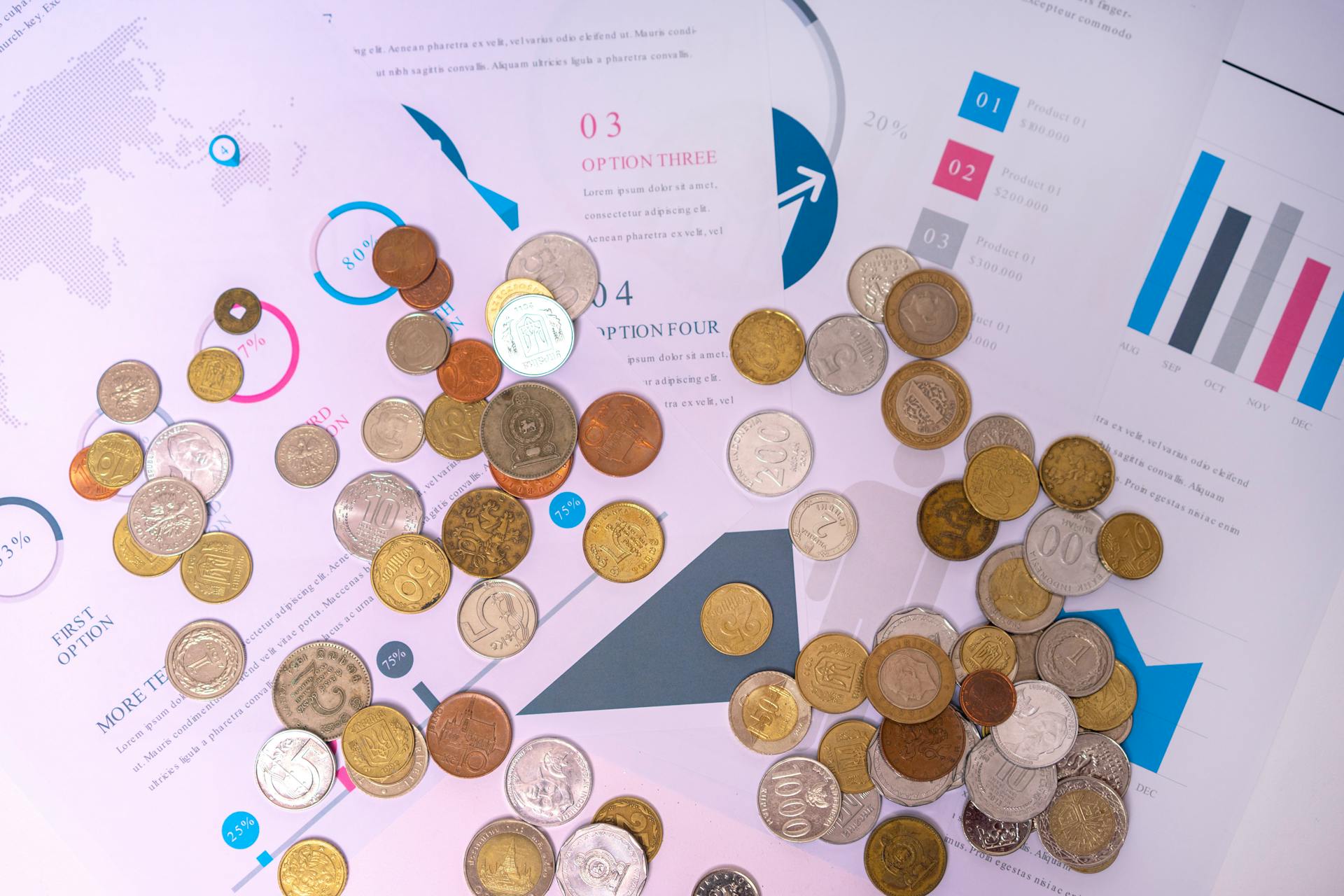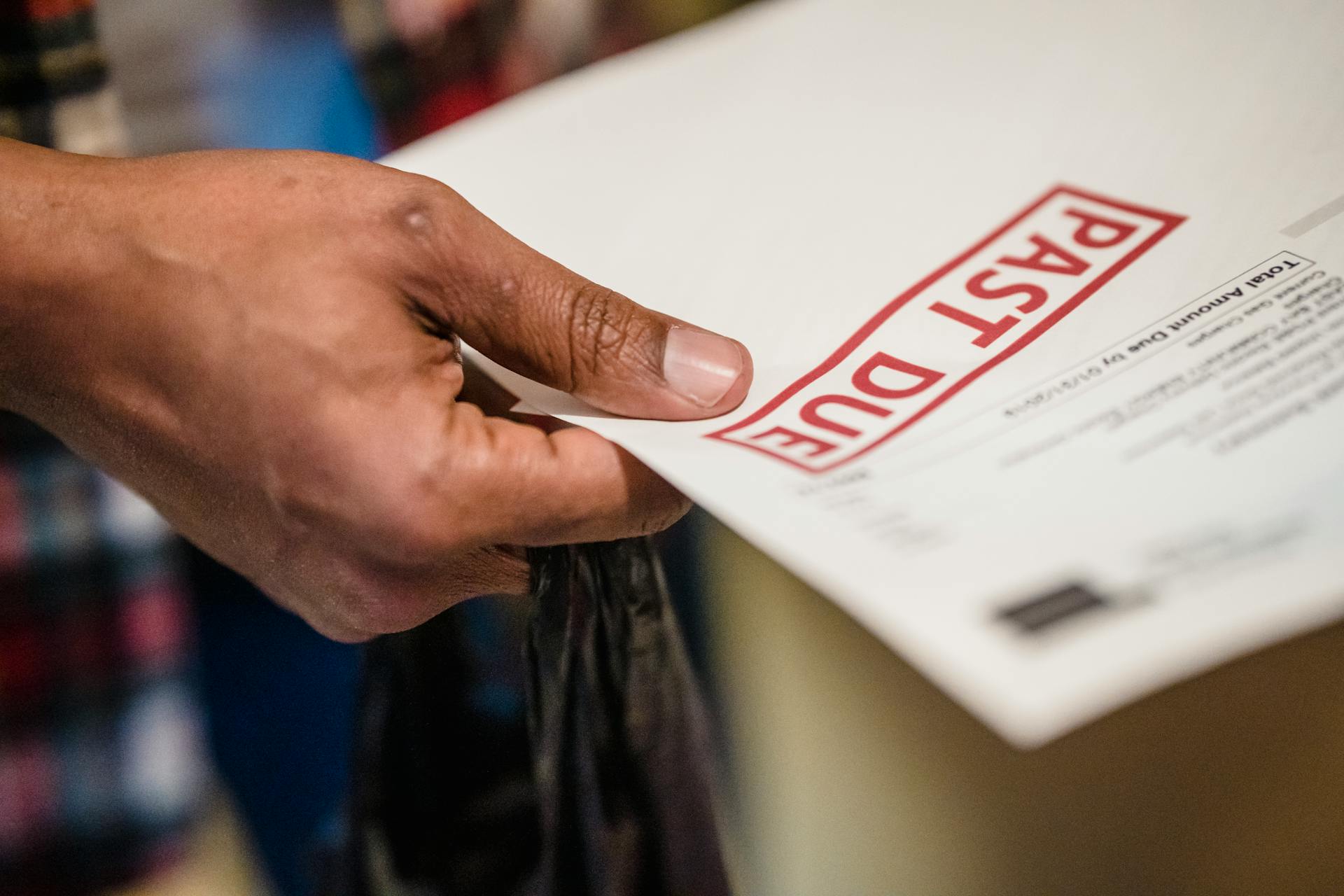
Reporting errors on your credit report can be a daunting task, but it's a crucial step in maintaining a healthy credit score. You can dispute errors with the three major credit bureaus: Equifax, Experian, and TransUnion, and request that they remove or correct the information.
Disputing errors is free and can be done online, by phone, or by mail. You're entitled to a free credit report from each bureau once a year, which can help you identify errors.
Reporting to Credit Bureaus
Reporting to credit bureaus can be a straightforward process. You can report consumer credit and collections to the major credit bureaus, including Equifax, Experian, Trans Union, and Innovis.
To get started, you'll need to go through the onboarding process with each credit bureau. This will involve registering with E-Oscar, which is a system used to manage disputes and corrections.
You can report errors on your credit report, which could include identity-related errors, such as a misspelled name or wrong phone number. This can be frustrating and time-consuming to resolve.
Some common errors on credit reports include incorrectly reported accounts, such as a closed account reported as open or an account wrongly reported as delinquent. You'll need to dispute these errors with the credit bureau.
Here are some examples of errors that can be reported to the credit bureaus:
- Identity-related errors
- Incorrectly reported accounts
- Account balance and credit limit errors
- Reinsertion of inaccurate information after it’s corrected
Remember to keep track of your disputes and corrections, as this can help you identify any patterns or issues with your credit report.
Understanding Reports
A credit report is a summary of your personal credit history, including identifying information and details about how you pay your bills. It's a crucial document that can affect your buying power, job prospects, and more.
The three nationwide credit bureaus - Equifax, Experian, and TransUnion - collect and update this information, but not all creditors report to them. Most nationwide chain store and bank credit card accounts, along with loans, are included in credit reports.
Here are the three main requirements of the Fair Credit Reporting Act (FCRA):
- make sure that the information they collect about you is accurate
- give you a free copy of your report once every 12 months
- give you a chance to fix any mistakes
What Is a Report?

A credit report is a summary of your personal credit history, including identifying information and details about how you pay your bills or if you filed for bankruptcy.
Three nationwide credit bureaus, Equifax, Experian, and TransUnion, collect and update this information. Most nationwide chain store and bank credit card accounts, along with loans, are included in credit reports.
The information in your credit report can affect your buying power and even your chances of getting a job, renting a place to live, or buying insurance. Credit bureaus sell this information to businesses that use it to make decisions about lending you money, giving you credit, or renting you a home.
Here's what you can expect from the credit bureaus:
- They must ensure the information they collect about you is accurate.
- They must give you a free copy of your report once every 12 months.
- They must give you a chance to fix any mistakes.
The Fair Credit Reporting Act (FCRA), a federal law, requires these protections.
Your Reports
You can get a free copy of your credit report once a year from each of the three nationwide credit bureaus: Equifax, Experian, and TransUnion. This is a right granted by federal law.
To get your free report, visit AnnualCreditReport.com, call 1-877-322-8228, or complete the Annual Credit Report Request Form and mail it to the address listed on the website.
You can also get a free report if you've been denied credit, employment, insurance, or another benefit based on information in your credit report. You must ask for your report within 60 days of getting the notice.
Additionally, if you're out of work and looking for a job, getting public assistance, or have a fraud alert on your credit file, you're entitled to a free report.
You can get your free report from the credit bureau that provided the information to the business that denied you. Use the contact information on the adverse action notice or at IdentityTheft.gov/CreditBureauContacts.
A credit report is a summary of your personal credit history, including identifying information and credit history. The three nationwide credit bureaus collect and update this information.
Your credit report can affect your buying power, job prospects, and even your ability to rent or buy a home. It's essential to ensure the information in your report is accurate.
Curious to learn more? Check out: Credit Cards for No Credit History No Deposit
You have the right to review your credit report and dispute any errors. The Fair Credit Reporting Act requires credit bureaus to give you a free copy of your report once every 12 months.
If you find errors on your report, you can dispute them with each of the three credit bureaus. Include all evidence, such as account statements or payment records, to support your dispute.
To file a dispute, write a letter explaining the problem and send it to the credit bureau by certified mail. Keep a copy for yourself.
You can also check your credit report online or by phone. The three credit bureaus have websites and phone numbers where you can request your report.
It's a good idea to stagger your requests for your free report throughout the year to keep an eye on the accuracy and completeness of the information in your reports.
You can also get six free credit reports per year from Equifax through 2026 by visiting AnnualCreditReport.com.
Here are some common errors that can appear on your credit report:
- Identity-related errors, such as a misspelled name or wrong phone number
- Incorrectly reported accounts, such as a closed account reported as open
- Account balance and credit limit errors
- Reinsertion of inaccurate information after it's been corrected
Preparing to Report
Before you start reporting to the credit bureaus, you need to know which ones to report to: Equifax, Experian, Trans Union, and Innovis. You'll also need to understand the onboarding process, which involves registering with E-Oscar.
To report to the credit bureaus directly, you'll need to have your data in the standard Metro 2 Format. This format is used by all four bureaus to accept data into their consumer credit database.
Curious to learn more? Check out: Credit Bureaus Obtain Data from Which of the following
Sign Data Furnisher Agreement
Signing a data furnisher's agreement is a crucial step in preparing to report your data to credit bureaus. This agreement is required by each credit bureau before they can load your data into their database.
The process can take a few weeks, and you only need to sign an agreement with the bureaus you want to report to. Datalinx has nearly 20 years of experience helping customers with this process, and they can assist you with obtaining all the necessary information to get started right away.
During this process, the credit bureaus may ask you questions about the type of data you will be reporting and how you manage that data internally. They may also ask you to allow for an on-site inspection of your place of business. Datalinx can help you with these conversations and work with the bureaus to make sure they have everything they need to proceed.
Here's a step-by-step guide to signing a data furnisher's agreement:
1. Choose the credit bureaus you want to report to.
2. Obtain the necessary information and documentation required by the bureaus.
3. Sign the data furnisher's agreement with each bureau.
4. Allow for an on-site inspection of your place of business (if required).
5. Work with Datalinx to ensure a smooth process.
By following these steps, you can ensure that your data is accurately reported to the credit bureaus and that you're well-prepared for the process.
Step 2: Convert
Converting your data to the Metro 2 Format is a crucial step in preparing to report credit to the credit bureaus. This format is the standard used by all four bureaus: Equifax, Experian, Trans Union, and Innovis.
You can use your existing accounting system to generate the core information required for reporting, usually in Excel or Text format. Our credit reporting software system then takes that information and converts it into the Metro 2 Format for monthly reporting to the credit bureaus.
Test Metro 2 File
The final step before reporting to credit bureaus is to test your Metro 2 file. This process usually takes two to four weeks.
Your file will be tested for its integrity, making sure you followed the Metro 2 guidelines. The testing process will also cover the integrity of the data, ensuring you adhered to federal laws such as the FCRA and FCBA.
Having your file tested is crucial to ensure you're reporting accurate and timely information. Our credit reporting software service can validate your file for testing purposes and continue to ensure you're reporting correctly every month.
To give you an idea of what to expect, here's a step-by-step breakdown of the testing process:
This testing process is a standard procedure to ensure you're reporting accurate and timely information to credit bureaus.
Reporting Process
To report errors to credit bureaus, you have four options: order your free reports at the same time or stagger your requests throughout the year. Staggering your requests may be a good way to keep an eye on the accuracy and completeness of the information in your reports.
Explore further: When Do Credit Bureaus Update Scores
You can file a dispute with each of the three credit bureaus: Experian, Equifax, and TransUnion. Filing a dispute with each credit bureau, instead of the lender or bank, offers protections governing how quickly it must be handled.
To file a dispute, include all evidence, such as account statements or payment records, and create a paper trail by writing a letter explaining the problem. The Federal Trade Commission provides a free example letter to help you get started.
Explore further: Identity Theft Letter to Credit Bureaus
How to Report
You can report consumer credit and collections to the credit bureaus by following a few steps. The credit bureaus you'll need to contact are Equifax, Experian, Trans Union, and Innovis.
First, you'll need to go through an onboarding process with each credit bureau. This process involves registering with E-Oscar, which will give you access to their systems. The onboarding process can be complex, but it's a necessary step to get started.

Metro 2 formatting is also an important part of reporting credit. This is a specific format that credit bureaus use to record and report credit information, and it's essential to understand it to ensure your report is accurate and complete.
To report credit, you'll need to provide all the necessary information in the correct format. This may include account statements, payment records, and other relevant documentation.
Send a Letter
When disputing errors on your credit report, sending a letter to the credit bureau is a crucial step. You can dispute inaccuracies on your credit reports online or by mail with Equifax, Experian, and TransUnion.
To start, give your contact information and explain in writing what the error is and why it's wrong. You'll find sample letters to dispute credit report information with the credit bureau on the CFPB website.
Keep copies of any letters or documentation that you send, and consider using certified mail with a return receipt to ensure it's delivered.
For another approach, see: Credit Repair Sample Letters
The credit bureaus have a 30-day timeline to respond to your dispute, and they must get the disputed information to the financial institution or debt collector that supplied it within five days.
If the company doesn't investigate and respond in time, the credit bureaus are required to delete the information.
Sources
- https://datalinxllc.com/how-to-report-to-credit-bureaus/
- https://www.experian.com/blogs/ask-experian/can-i-add-good-payment-history-credit-report/
- https://consumer.ftc.gov/articles/free-credit-reports
- https://www.creditkarma.com/credit-cards/i/dispute-error-credit-report
- https://www.consumerreports.org/money/credit-scores-reports/credit-report-error-complaints-surge-check-your-report-a1194343465/
Featured Images: pexels.com

